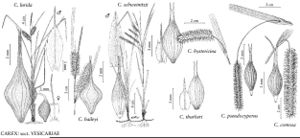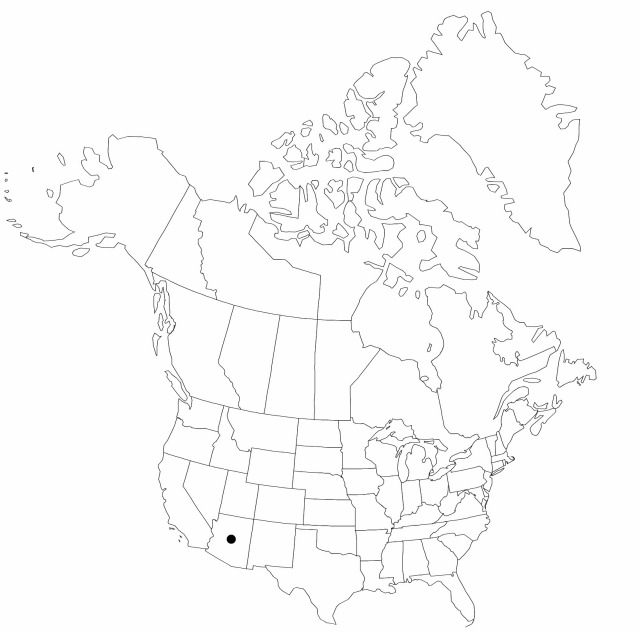Carex thurberi
in W. H. Emory, Rep. U.S. Mex. Bound. 2(1): 232. 1859.
Plants densely to loosely cespitose; rhizomes short, no more than 10 cm. Culms trigonous in cross-section, 40–100 cm, scabrous-angled distally. Leaves: basal sheaths reddish purple; ligules longer than wide; blades pale to mid green, flat to W-shaped, 3.5–9 mm wide, glabrous. Inflorescences 6–25 cm; proximal bract 15–40 cm, exceeding inflorescence; proximal 3–4 spikes pistillate, erect or the proximal spreading; terminal 1–2 spikes staminate. Pistillate scales ovate, obtuse to acuminate, 2–4.4 (–5.1) × 0.7–1.3 mm, shorter than perigynia, margins erose, apex contracted, scabrous-awned, awn mostly shorter than body. Staminate scales scabrous-awned, sometimes also ciliate-margined. Perigynia ascending, ca. 13–25-veined, veins separated by 3+ times their width, confluent at or proximal to mid beak (except for 2 prominent lateral), narrowly elliptic, 3.1–4.8 × 0.9–1.5 (–1.8) mm, herbaceous, apex tapered; beak 0.9–1.8 mm, smooth, bidentulate, teeth straight, 0.4–0.9 mm. Stigmas 3. Achenes yellow to pale-brown, trigonous, smooth.
Phenology: Fruiting May–Aug.
Habitat: Stream banks, springheads, seeps, wet meadows
Elevation: 1100–1800 m
Discussion
Selected References
None.
Lower Taxa
"shortened" is not a number.

